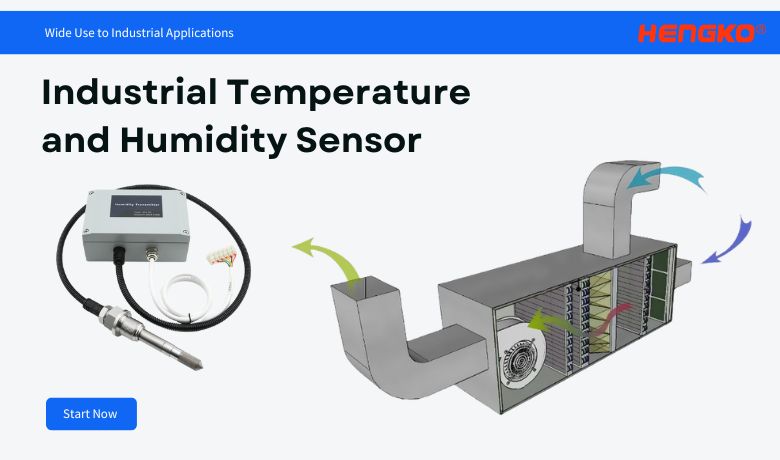What is Industrial Temperature and Humidity Sensor ?
What is Industrial Temperature and Humidity Sensor ?
Industrial temperature and humidity sensors are devices that measure and monitor the temperature and humidity levels in various industrial environments. These sensors are crucial for maintaining optimal conditions for industrial processes, goods storage, and workers' overall safety.
How industrial temperature and humidity sensor works An industrial temperature and humidity sensor typically consists of two main components: a temperature sensor and a humidity sensor. The temperature sensor measures the temperature in the environment, while the humidity sensor measures the moisture content in the air. These sensors are calibrated at the factory to ensure accurate readings.
Data collected by the sensors is then transmitted to a control system or data logger, which can be analyzed and used to adjust the environment as needed. It included turning on cooling or heating systems, adjusting humidity levels, or activating alarms if conditions fall outside a safe range.
Types of industrial temperature and humidity Sensors
There are several different types of industrial temperature and humidity sensors available on the market, including:
- Wired sensors require a physical connection to the control system or data logger to transmit data.
- Wireless sensors use wireless technology to transmit data to the control system or data logger.
- Hybrid sensors: These sensors combine the features of both wired and wireless sensors.
Each type of sensor has advantages and disadvantages, and the best choice will depend on the application and environment in which the sensor will be used.
Applications of industrial temperature and humidity sensor
Industrial temperature and humidity sensors have a wide range of applications, including:
1. HVAC systems - to monitor indoor air quality and regulate heating, ventilation and air conditioning systems.
2. Data centers - to maintain optimal temperature and humidity conditions for electronic equipment.
3. Greenhouses - to monitor and control temperature and humidity levels for plant growth and health.
4. Laboratories - to monitor and control temperature and humidity levels for experiments and storage of materials.
5. Pharmaceutical industry - to monitor temperature and humidity in storage and transportation of sensitive drugs.
6. Food and beverage industry - to monitor temperature and humidity in storage and transportation of perishable goods.
7. Museums and archives - to monitor temperature and humidity levels to protect delicate artifacts and documents.
8. Weather stations - to measure temperature and humidity in outdoor environments.
9. Agriculture - to monitor temperature and humidity levels for crop growth and soil moisture analysis.
10. Building management systems - to monitor temperature and humidity levels in commercial and residential buildings.
Challenges and considerations While industrial temperature and humidity sensors are highly accurate and reliable, there are still a few challenges and considerations to keep in mind when using these sensors.
Sensor accuracy and precision: As with any measurement device, uncertainty is always involved. It's important to calibrate the sensor regularly to ensure accurate readings.
Environmental factors: The environment in which the sensor is used can significantly impact its accuracy. Factors such as dust, vibration, and electromagnetic interference can all affect sensor performance.
Data management and analysis: Collecting and analyzing data from industrial temperature and humidity sensors can be complex, particularly if many sensors are in use. It's important to have a robust data management system to ensure that data is collected, stored, and analyzed efficiently.
Conclusion
Industrial temperature and humidity sensors are essential for maintaining optimal conditions in various industrial environments. These sensors are highly accurate and reliable, with a wide range of applications. However, there are still a few challenges and considerations to keep in mind when using these sensors. With the advancement of technology and IoT, future developments in industrial temperature and humidity sensor technology will allow for even greater precision and automation, making it easier to maintain safe and optimal conditions in industrial environments.
Have more questions about Industrial Temperature and Humidity Sensor, please feel free to contact us for details by email ka@hengko.com, we will send back within 24-Hours.
